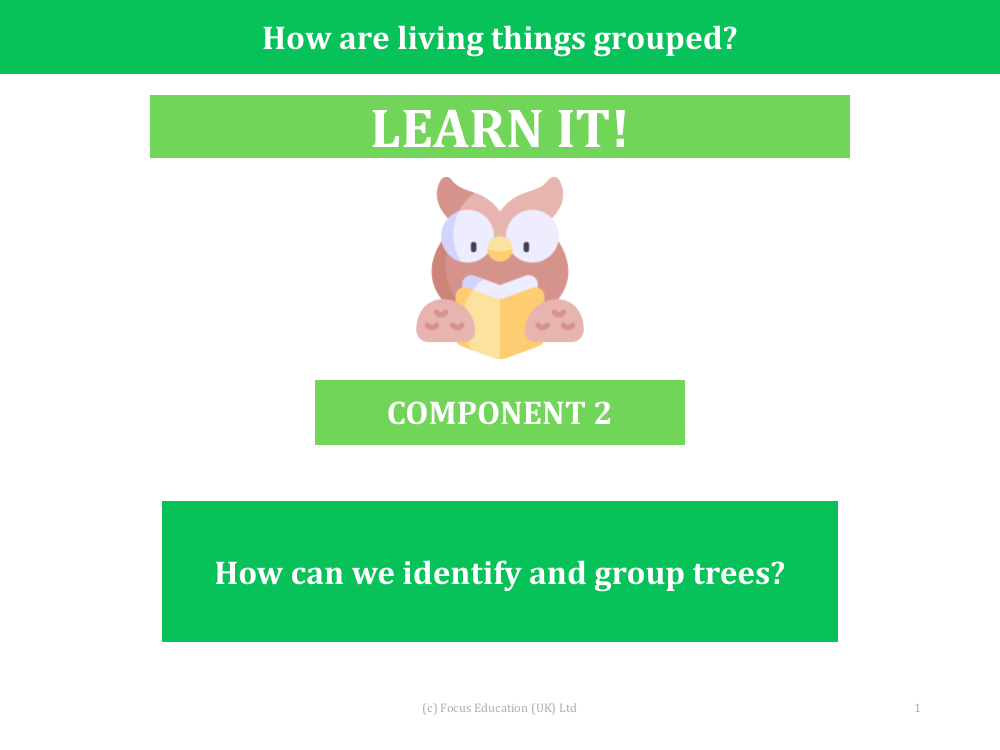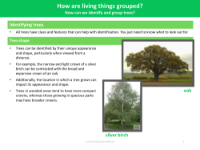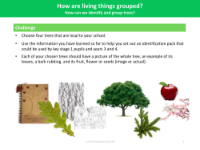How can we identify and group trees? - Presentation

Science Resource Description
Understanding how to identify and group trees is an important part of learning about our local environment. Building on the foundation set in Year 2, students are encouraged to examine the trees around them, paying particular attention to the crown, which is the top part of the tree where the branches and leaves extend from the trunk. The bark is another key feature, with its texture, markings, and colour providing vital clues for identification. Observing the bark from the base to the top can reveal how it changes with the tree's age. Leaves offer further identification hints, with their shape, texture, and colour being distinctive during the spring and summer months. The lesson aims to equip students with the skills to create an identification pack for trees, which could be used by younger pupils to learn about tree identification.
Identifying trees can be a fascinating challenge, and this lesson plan guides students through the various characteristics to look for. The shape of a tree, such as the narrow crown of a silver birch compared to the broad crown of an oak, is one aspect. The bark's unique features, such as ridges, depressions, and colour variations, are also discussed. Leaves are classified into simple and compound types, with details on their edges and vein structures. Additionally, the presence of flowers, fruits, and seeds can be an indicator of a tree's species, especially since they may only appear at certain times of the year. The lesson concludes with a practical challenge for students to select four local trees and compile an identification pack that includes pictures of the entire tree, samples of leaves, bark rubbings, and images or actual samples of the tree's fruit, flowers, or seeds, tailored for younger students in key stage 1 and years 3 and 4.



